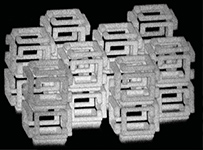Over the previous two decades, a diverse array of geochemical negative emissions technologies (NETs) have been proposed, which use alkaline minerals for removing and permanently storing atmospheric carbon dioxide (CO2). Geochemical NETs include CO2 mineralization (methods which react alkaline minerals with CO2, producing solid carbonate minerals), enhanced weathering (dispersing alkaline minerals in the environment for CO2 drawdown) and ocean alkalinity enhancement (manipulation of ocean chemistry to remove CO2 from air as dissolved inorganic carbon). CO2 mineralization approaches include in situ (CO2 reacts with alkaline minerals in the Earth’s subsurface), surficial (high surface area alkaline minerals found at the Earth’s surface are reacted with air or CO2-bearing fluids), and ex situ (high surface area alkaline minerals are transported to sites of concentrated CO2 production). Geochemical NETS may also include an approach to direct air capture (DAC) that harnesses surficial mineralization reactions to remove CO2 from air, and produce concentrated CO2. Overall, these technologies are at an early stage of development with just a few subjected to field trials. In Part I of this work we have reviewed the current state of geochemical NETs, highlighting key features (mineral resources; processes; kinetics; storage durability; synergies with other NETs such as DAC, risks; limitations; co-benefits, environmental impacts and life-cycle assessment). The role of organisms and biological mechanisms in enhancing geochemical NETs is also explored. In Part II, a roadmap is presented to help catalyze the research, development, and deployment of geochemical NETs at the gigaton scale over the coming decades.
